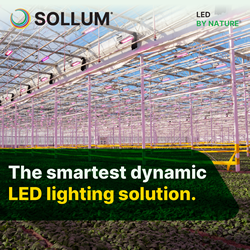Controlled Environment Agriculture Market Worth to Reach $168.7 Bn by 2032
The Controlled Environment Agriculture Market size will depict a 14% CAGR between 2024 and 2032. Energy storage technologies are largely adopted to store excess energy generated by renewables, ensuring a stable energy supply for controlled environment agriculture (CEA) operations. The integration of renewable energy sources like solar and wind power into these operations has grown common as it not only reduces the carbon footprint but also lowers operating costs. For example, in January 2024, RWE, a major energy firm, operationalized an agrivoltaics plant in North Rhine-Westphalia, Germany to highlight the emerging trend of merging agriculture with solar power generation.
The CEA industry is segmented into component, technology, crop, end use, and region.
.png)
The industry value from the aquaponics segment will hit a lucrative growth rate through 2032. Aquaponics stands out for its sustainability, operating on a closed-loop principle. Fish excrement nourishes the plants, and in return, the plants purify the water for the fish. This symbiotic relationship diminishes reliance on external inputs, such as chemical fertilizers. Furthermore, aquaponics systems are more water-efficient than conventional soil-based farming, due to their recirculating water mechanism, making them particularly beneficial in water-scarce regions.
The CEA market size from the residential segment will exhibit immense expansion between 2024 and 2032. Homeowners are increasingly embracing residential hydroponic systems, enabling them to cultivate vegetables, herbs, and small fruits indoors, all without the need for soil. These systems are not only compact and user-friendly but can also be conveniently set up in kitchens, balconies, or even living rooms. The rise of smart indoor gardens, equipped with IoT devices and automation will also boost the segment growth.
Asia Pacific controlled environment agriculture industry share will expand up to 2032. With the urban population on the rise, vertical farming and urban agriculture are gaining traction. Controlled environment agriculture optimizes space in cities, bringing food production nearer to consumers and cutting down transportation-related carbon emissions. The growing emphasis on reducing the use of chemical fertilizers and pesticides will also favor the market growth to render precise control over growing conditions across the region.
Source https://www.gminsights.com/industry-analysis/controlled-environment-agriculture-cea-market
Comments (0)
This post does not have any comments. Be the first to leave a comment below.
Featured Product

